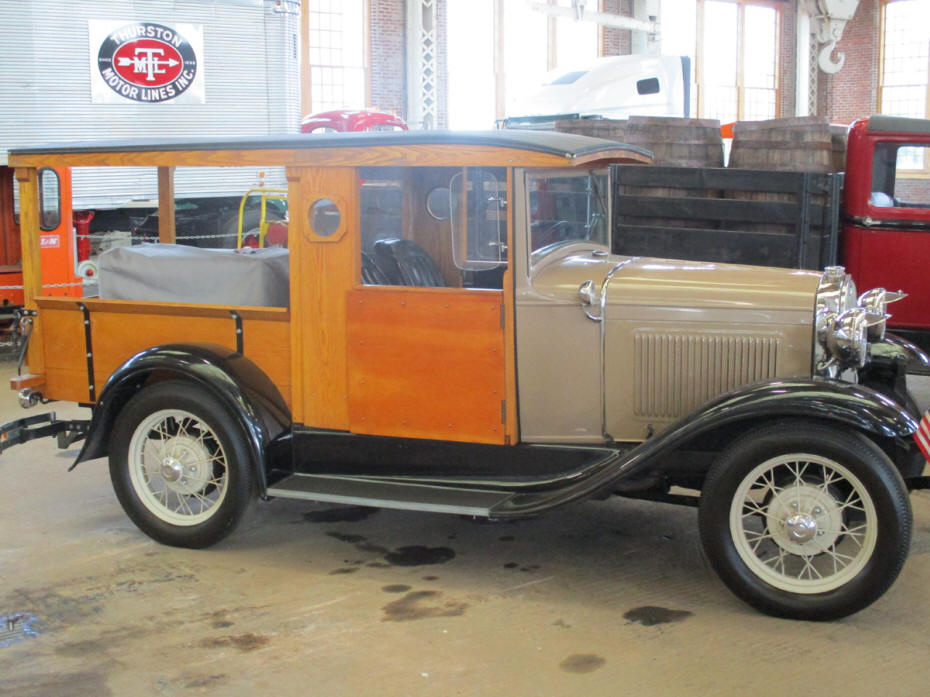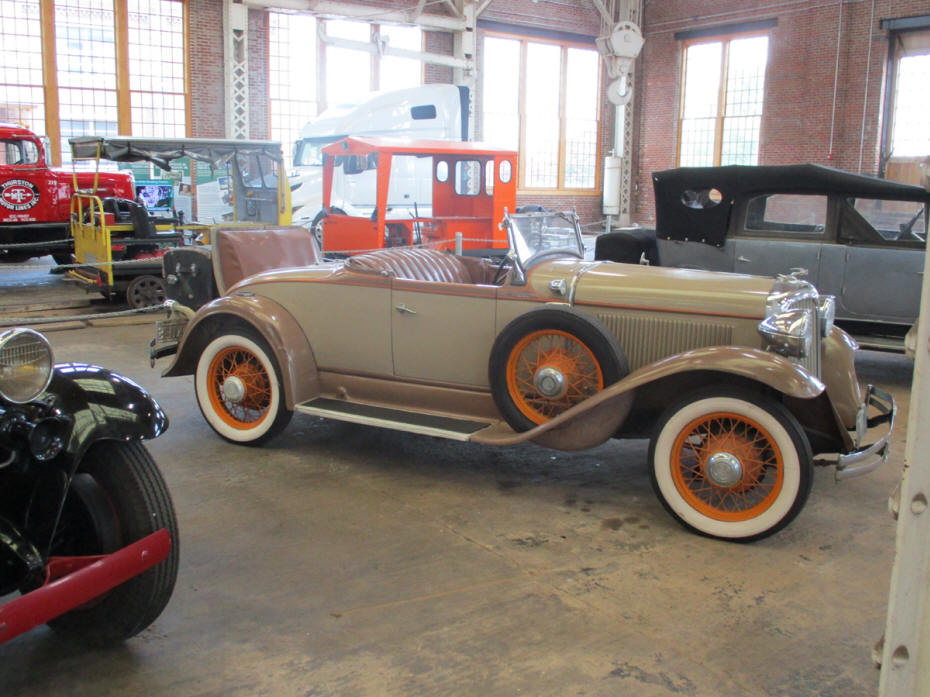|
This is one of the gems which is hidden right
off a major interstate. It’s for transportation
buffs, especially railroad buffs. In the late
nineteenth century, J.P. Morgan, owner of what
was once the Southern Railway Company, located
its largest steam locomotive servicing facility
halfway between the railroad’s major terminal
points of Washington, D.C. and Atlanta. The
complex was named after the first president of
the Southern Railway, Samuel Spencer. The nearby
town took on the same name. Today that site is
right off Interstate 85, Exit 79, in North
Carolina (just outside Salisbury).
 |
A
bird’s-eye view of the museum site, with
the Roundhouse lower right and Back Shop
about the middle.
Credit: NCTM. |
Construction of Spencer Shops began in 1896
and it became a major East Coast locomotive
servicing center for over 60 years. It was huge
and still is, employing nearly 3,000 people at
its peak. It declined with the advent of the
diesel locomotive and closed in 1960.The yards
remained open until the late 1970s. Southern
Railways donated the land and buildings to the
state of North Carolina, and it became a state
historic site, with the first exhibit opening in
1983.
 |
| The
visitor center is located in Barber
Junction. |
The 60-acre site has four exhibit buildings
that remain from the historic Spencer Shops. The
roundhouse, the largest remaining one in North
America, features the steam and diesel
locomotives, plus a lot more. The huge Back Shop
(90,000 square feet) features the aviation,
boat, and automotive exhibits. The visitor’s
center is Barber Junction, a building from the
town of the same name, constructed in 1898 and
moved to the site. Don’t miss the movie that
presents the history of the Shops. Part of
admission is a 25-minute train ride that departs
from Barber Junction, runs to the roundhouse,
and returns. One excellent option is half of a
train ride, with a long walk back through the
exhibit buildings. Other buildings include the
master mechanic’s office, flue shop, and
storehouse no. 3, built in 1896. The master
mechanic’s office includes a large gift shop.
The roundhouse has 37 stalls and many of them
have locomotives or box cars in them. Some can
be boarded. All have at least full access. Both
steam and diesel locomotives are included, plus
some specialty railroad equipment. All kinds of
box cars are in the collection, for example, a
railroad post office and a hospital car.
 |
 |
Seaboard Air Line # 544, built 1918 for Russian State Railroad, but not
delivered due to Revolution of 1917.
Used to ship war supplies in
World War I, later in the Seaboard system. |
Southern
Railway #542, built for Baldwin
Locomotive Works in 1903. Operated on
Southern Railroad around Statesville and
Winston-Salem.
|
 |
 |
|
Atlantic Coast Line #1031, built in
1913. Nicknamed “Copperhead” due to
bright copper rings around top of
smokestack. Operated from Richmond, VA
to Jacksonville, FL
|
Southern Railroad #6900,
diesel locomotive built in 1950. |
 |
|
The Raleigh replica of the first steam
locomotive to operate in North Carolina,
built in 1927 by Seaboard Air Line.
|
 |
|
Of course, there are lots of box cars to
go along with the locomotives.
|
 |
| Inside
of a hospital car.
|
 |
 |
|
Ghost performing maintenance work. |
Inside of
mail car. |
OK, we’ve discussed
trains, what about the planes? There is an
excellent exhibit on “The Wright Brothers:
Inventing the Airplane.” It includes a full-size
replica of the Wright Flyer (21-foot length,
40-foot wingspan, and weighing 600 pounds). The
“Potomac Pacemaker,” a Piedmont Airlines DC-3,
is also on display. Piedmont was the premier
North Carolina airline and much of its aircraft
lore is included.
 |
|
The Wright Flyer about to take off. |
 |
|
Piedmont Airlines is heavily covered in
the aviation exhibit, making one think
of the good old days of air travel.
|
 |
|
The Potomac Pacemaker, or what is left
of it as it is being reconstructed.
|
There are plenty of automobiles and a few
boats. Plus, all other sorts of
transportation items, including sub-categories
like fire equipment and military vehicles.
Consider that the Back Shop is 90,000 square
feet and is sub-divided into topical areas,
giving the visitor plenty to see. The
description “transportation” is certainly
appropriate, with often special items you’d just
would not expect to see.
 |
The Back Shop contains most of the
automobiles, trucks, wagons, and boats.
There
are lots of stalls and lots of space, 90,000
square feet. |
 |
| A Ford
Woody station wagon. |
 |
1931
Chrysler Roadster. A new offering was a
floating suspension system.
Despite the Depression, Chrysler was
still making engineering improvements.
|
 |
|
Railway Express delivery truck. |
 |
| One of
the military vehicles, familiar to
anyone who has seen a World War II
movie. |
 |
| Lots of wagons, even covered ones. |
 |
Brockway Step Hook and Ladder Truck,
built about 1917 and used in Elizabeth City, NC
until the 1950s.
It carries 250 feet of ladder
and a 35-gallon tank of chemical fire retardant.
|
 |
|
Transportation covers horse and buggy
too. |
 |
| There are plenty of boats, even dugout
canoes. |
For additional
information:
North Carolina
Transportation Museum Homepage
https://www.nctrans.org/
Museum Brochure
https://www.nctrans.org/Plan-Visit/View-A-Museum-Brochure.aspx
|












